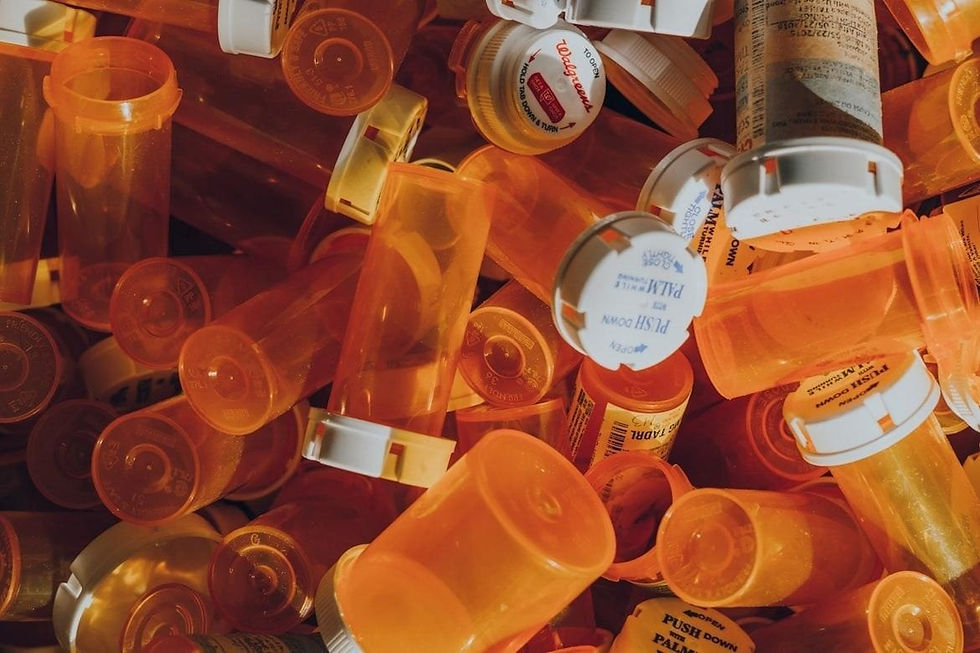Medical Waste Disposal Best Practices for Emergency Medical Services (EMS)
- mattgeorgov6
- 17 hours ago
- 3 min read

Emergency medical personnel work in fast-paced, unpredictable environments where every decision can mean the difference between life and death. Amid these urgent circumstances, maintaining proper medical waste disposal practices can easily become an afterthought. However, this practice is one of the most critical components of an EMS operation. From sharps to contaminated materials, every waste stream generated inside an ambulance must be managed with the same precision and compliance standards as in a hospital or clinic.
This article explores the best practices for handling EMS medical waste, focusing on sharps safety, bloodborne pathogen control, and proper containment in mobile settings. We’ll also discuss how Choice MedWaste supports emergency medical services with compliant, efficient, and eco-friendly disposal solutions throughout Delaware and neighboring regions.
The Unique Challenge of Medical Waste in Mobile Environments
Unlike hospitals or urgent care centers, EMS providers operate in confined, mobile spaces. Ambulances and emergency response vehicles are effectively “miniature clinics on wheels,” handling everything from trauma care to medication administration in tight quarters. This mobility introduces several waste management challenges, such as:
Limited storage capacity: EMS teams often have minimal room for temporary waste containment, making efficient organization essential.
Constant movement: Waste containers must be secured against spills and punctures during transport.
Rapid waste generation: Used sharps, gloves, dressings, and contaminated equipment accumulate quickly during calls.
Regulatory compliance: EMS providers must meet state and federal requirements for labeling, containment, and transport of regulated waste, even when operating between multiple jurisdictions.
Addressing these challenges requires a clear, consistent approach to emergency medical services waste management, with systems designed for mobility, safety, and compliance.
Sharps Safety: Preventing Injuries in the Field
Needlestick injuries are among the most common risks for EMS professionals. Ensuring proper sharps disposal for EMS begins with selecting containers designed specifically for mobile use. Best practices include the following.
Use portable sharps containers: Choose puncture-resistant containers that can be securely mounted within ambulances and easily sealed after use.
Never overfill: Containers should be replaced when they reach three-quarters capacity to avoid accidental punctures.
Immediate disposal: Used needles, syringes, and lancets must go directly into the sharps container after use.
Routine inspection: Supervisors should ensure all sharps containers meet DOT and OSHA standards and are properly labeled with biohazard markings.
Bloodborne Pathogen Protection
EMS responders face frequent exposure to blood and bodily fluids, which makes adherence to OSHA’s Bloodborne Pathogens Standard non-negotiable.
Use of PPE: Gloves, masks, and protective eyewear must be used consistently during patient contact and waste handling.
Containment of contaminated materials: Bandages, dressings, and absorbent pads should be immediately placed into red biohazard bags that meet regulatory thickness and strength standards.
Regular decontamination: Surfaces within the ambulance should be disinfected after every call using EPA-approved products.
Exposure response: In the event of an exposure, EMS personnel should follow the agency’s post-exposure protocol and document the incident promptly.
Proper Waste Containment and Temporary Storage
Managing mobile medical waste disposal means balancing accessibility and security. EMS vehicles must have designated areas for different waste streams without compromising space or safety. Here are the best practices to follow.
Segregation at the source: Keep sharps, infectious waste, and non-regulated materials in separate containers.
Use of lockable storage units: Securing containers prevents spills during vehicle movement and restricts unauthorized access.
Temperature considerations: In extreme heat, waste can degrade or produce odors; storing containers in shaded or temperature-controlled compartments can help.
Scheduled offloading: Partnering with a regulated waste provider ensures that containers are emptied and replaced on a consistent schedule to prevent overflow.
Once returned to the EMS facility, waste should be consolidated into larger DOT-approved containers for transport and final treatment.
Transportation and Regulatory Compliance
All EMS medical waste must be properly labeled, stored, and transported in accordance with federal and state laws. Documentation ensures transparency from collection to disposal. Partnering with a licensed transporter like Choice MedWaste ensures that every step of the process meets environmental and legal standards.
Choice MedWaste assists EMS providers through the following services.
Supplying DOT-compliant containers and labels for regulated waste.
Offering flexible pickup schedules tailored to EMS operations.
Managing all required documentation and manifests for regulatory reporting.
Providing sustainable disposal methods, such as waste-to-energy incineration, to minimize landfill impact.
This comprehensive approach gives EMS agencies peace of mind, knowing their waste is handled safely, efficiently, and responsibly.
Final Thoughts on Medical Waste Disposal for EMS
Handling medical waste in an EMS environment requires careful planning, staff training, and dependable partners. By following best practices in sharps safety, pathogen protection, and mobile containment, EMS providers can maintain compliance and protect their teams from unnecessary risk. With Choice MedWaste as a dedicated partner, emergency medical services can count on a cleaner, safer, and fully compliant waste management system.






Comments